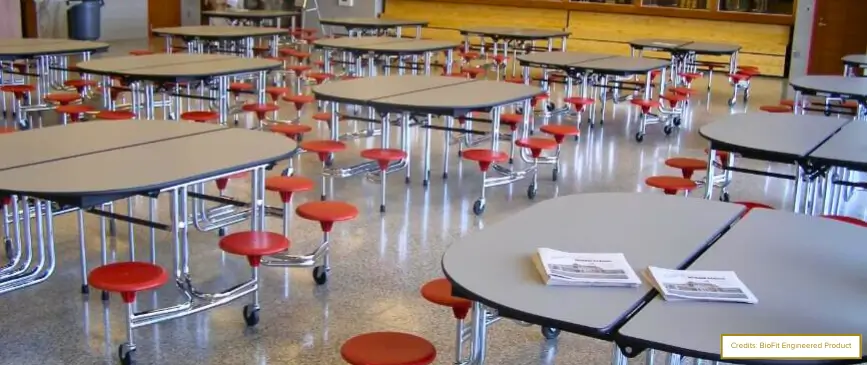Introduction
Lunchtimes are the crown jewel of the school day, but seating arrangements can turn this cherished break into topsy-turvy. As the cafeteria’s menu can make or break the meal, seating policies shape students’ experiences.
Some students are like peas in a pod who love to sit with their best friends, forming tight-knit circles, while others enjoy mingling with new faces, hoping to broaden their horizons.
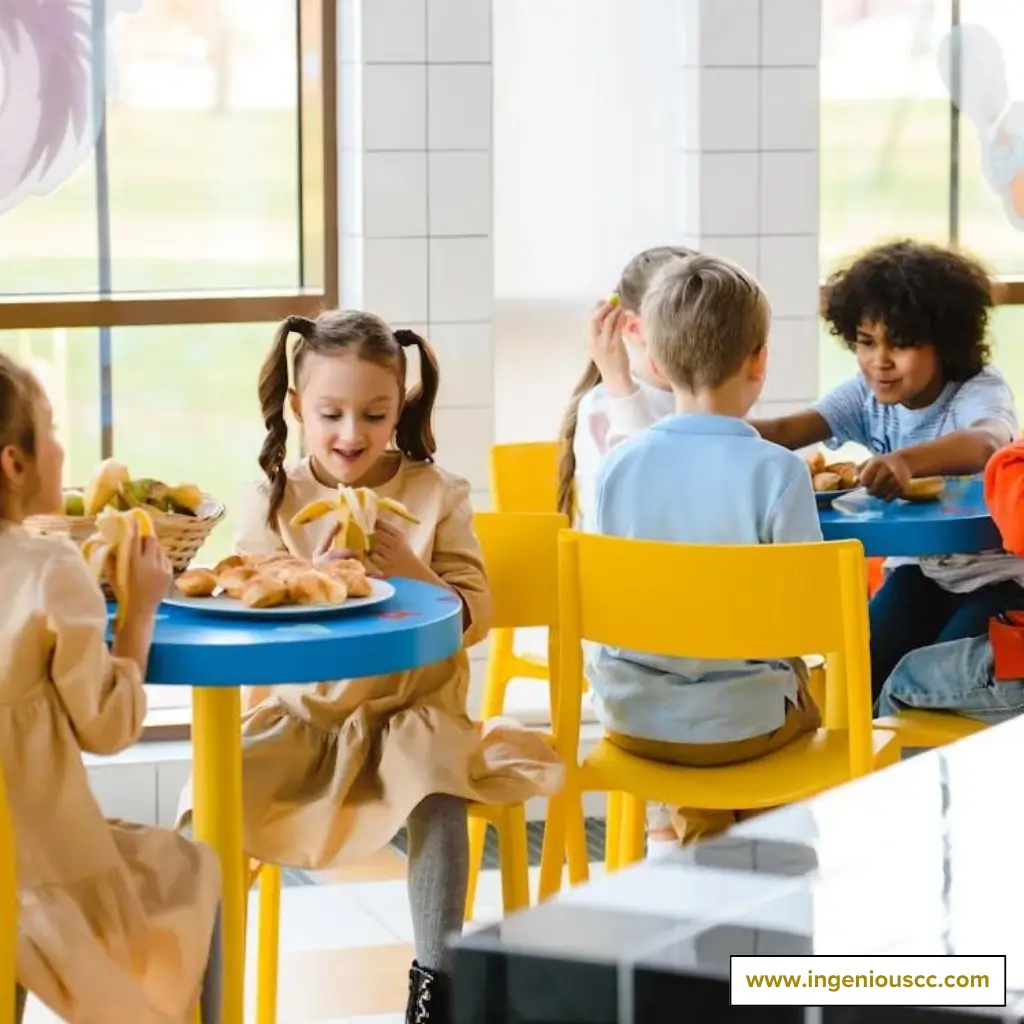
Schools have started assigning seats in the cafeteria to curb the chaos and ensure every student is well-fed. But does this truly help in behavior management, or does it rain on students’ parades?
Let’s dive into the debate on whether students should have assigned seats in cafeterias, backed by seasoned insights from our ICC cafeteria professionals who have been serving K12 school cafeterias for years.
How Assigned Seating Works – The Process and Implementation
As schools aim to spice up their cafeteria experiences, many have asked for guidance on rolling out assigned seating. What we’ve seen is a noticeable shift toward creating a more organized lunchtime atmosphere. In this effort, cafeteria staff team up with management and teachers to craft seating arrangements based on factors like student behavior, grade levels, and friendship dynamics.
Once the seating plan is set in stone, each student gets a specific spot, often marked with their name.
Yet, while many students welcome the order that assigned seating brings, others feel it limits their mealtime freedom, limiting their ability to choose where to sit and with whom to socialize.
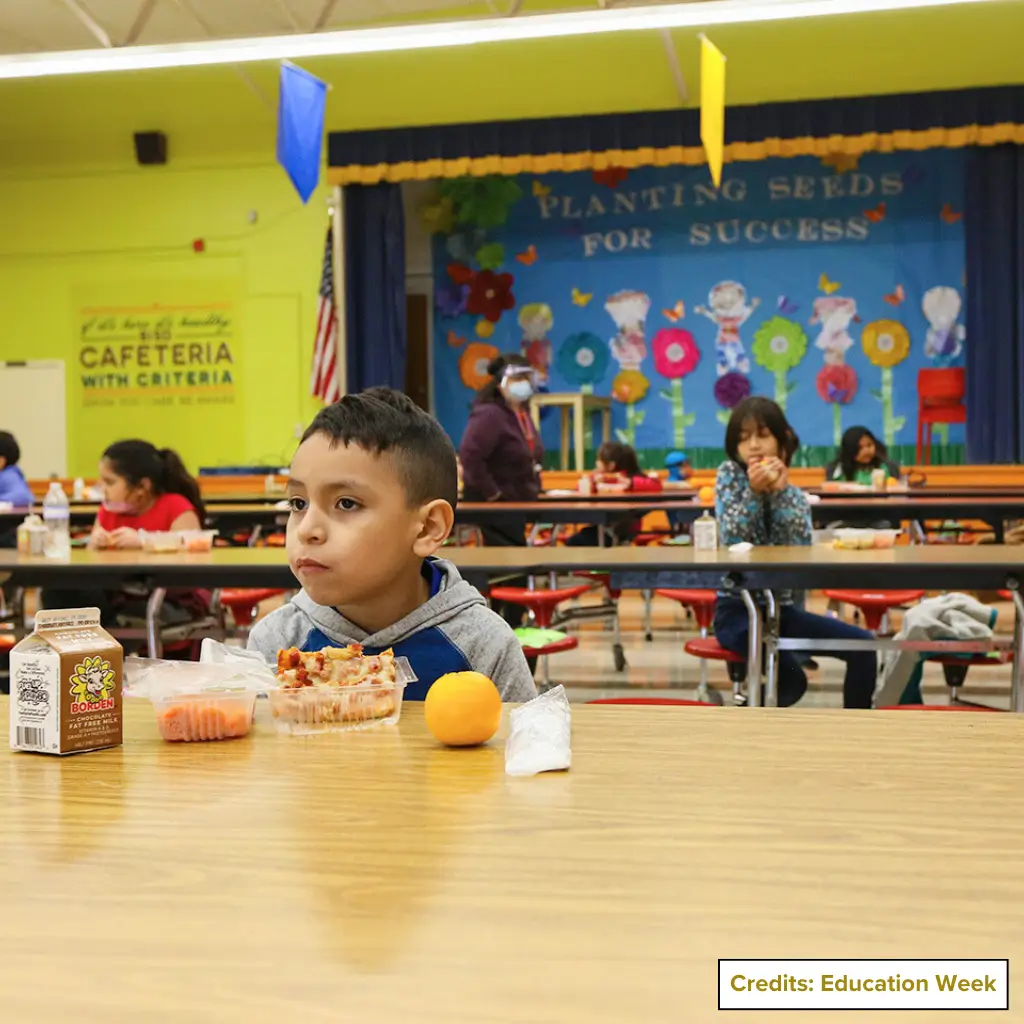
Statistics reveal that 59% of students feel assigned seating helps them make new friends, while 60% appreciate the opportunity to interact with classmates with whom they typically don’t cross paths.
However, a striking 88% believe that assigned seating shouldn’t be mandatory.
This feedback highlights students’ mixed bag of opinions, raising an important question: Is assigned seating genuinely effective?
To answer this, we have listed the pros and cons of assigned seating in school cafeterias.
Suggested Reading → How to Choose the Right Cafeteria Seating For Your School
Benefits of Assigned Seating
While working with schools on renovating their cafeteria graphics, we’ve seen that assigned seating can truly help manage the cafeteria environment. However, not all schools have had smooth sailing with this system; some have faced challenges in its implementation. We’ll delve into the downsides in our next section.
Moving forward, it’s worth noting that many sixth and seventh graders enjoy assigned seating because it allows them to meet new people and forge new friendships. In a world where social connections matter, this approach helps break the ice and brings students together in unexpected ways. Sometimes, a little structure can go a long way in fostering community. Below are the pros of establishing assigned seats in the cafeteria.
| Benefits Chart | |
| Behavior Management | Assigned seating helps teachers manage student behavior, minimizing disruptions during lunch. |
| Friendship Building | It encourages students to interact with peers they wouldn’t typically sit with, fostering new friendships. |
| Equal Opportunities | Ensures all students can sit in different areas and with various classmates. |
| Inclusivity for New Students | Provides a supportive environment for new students, helping them feel included at lunchtime. |
| Increased Focus on Meals | Students can focus more on their lunch meals and conversations with assigned seating rather than searching for a seat. |
| Bullying Prevention | Breaks up cliques that may exclude others, promoting a more inclusive atmosphere. |
| Support for Quiet Students | Makes shy or quiet students feel more comfortable and less anxious, as they don’t have to find a seat alone. |
| Calm and Organized Environment | Reduces chaos in the cafeteria by eliminating the scramble for seats, allowing students to enjoy their meals. |

Drawbacks of Assigned Seating
Conversely, many older students aren’t keen on assigned seating. They don’t see the value in it. They believe they should be free to choose where to sit during lunch.
For them, lunchtime is all about relaxing and having a good time with friends. Assigned seating could mean ending up next to someone they don’t get along with, which might lead to arguments.
This could make them unhappy, leading to stress and management problems. Our professionals suggest some reasons why this new seating arrangement might not be the best fit.
| Drawbacks Chart | |
| Lack of Accountability | Some students feel that assigned seating is not enforced, leading them to sit with whomever they choose. |
| Ineffectiveness for Socializing | It may not encourage new friendships, as students often sit with familiar faces. |
| Frustration with Change | Frequent changes in seating charts can frustrate students who prefer stability in social interactions. |
| Lack of Freedom | Students miss opportunities to choose their seats and socialize freely with friends. |
| Disruptive Behavior | Unhappy students may become loud and disruptive, leading to constant reminders from lunch helpers. |
| Limited Interaction | Friends who haven’t seen each other may miss opportunities to catch up and talk. |
| Decreased Enjoyment | Assigned seating may make kids less excited about lunch since they can’t sit with their chosen friends. |
| Repetitive Requests | Students may repeatedly ask to change seats to sit with friends, causing frustration and distractions. |
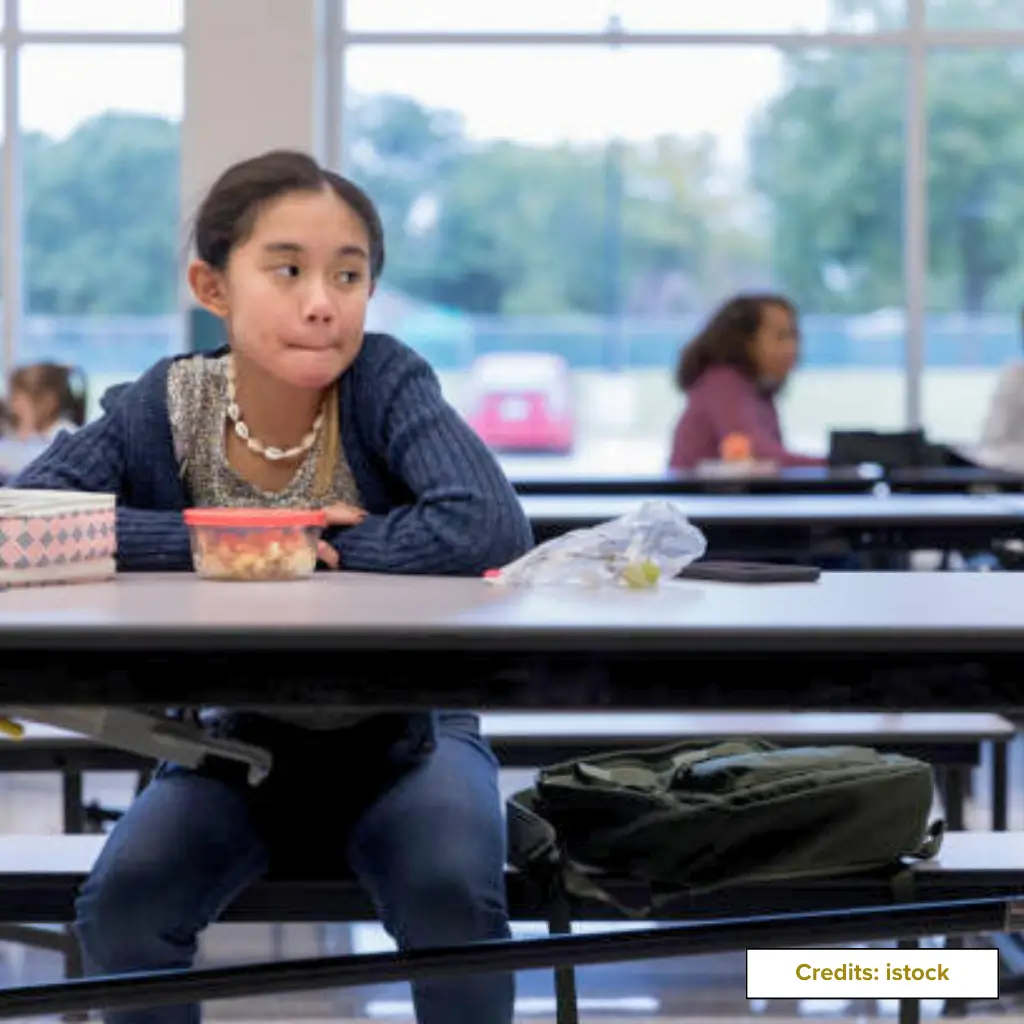
Should Students Have Assigned Seats In The Cafeteria? ICC Expert’s Perspective
At Ingenious Culinary Concept (ICC), with over 15 years of expertise in cafeteria design, we have dedicated ourselves to creating seating arrangements that cultivate a positive and productive atmosphere for students and school communities alike.
In our evaluation of assigned versus unassigned seating, we see the pros and cons of each approach, allowing us to find common ground. We recommend schools take the bull by the horns and initiate student surveys as a crucial first step in making an informed decision.
To hire our Cafeteria Seating Service, CLICK HERE!
To go the extra mile, here are some suggested seating strategies that will not only aid in promoting healthy eating but also enhance the dining experience for students and foster a more harmonious cafeteria environment:
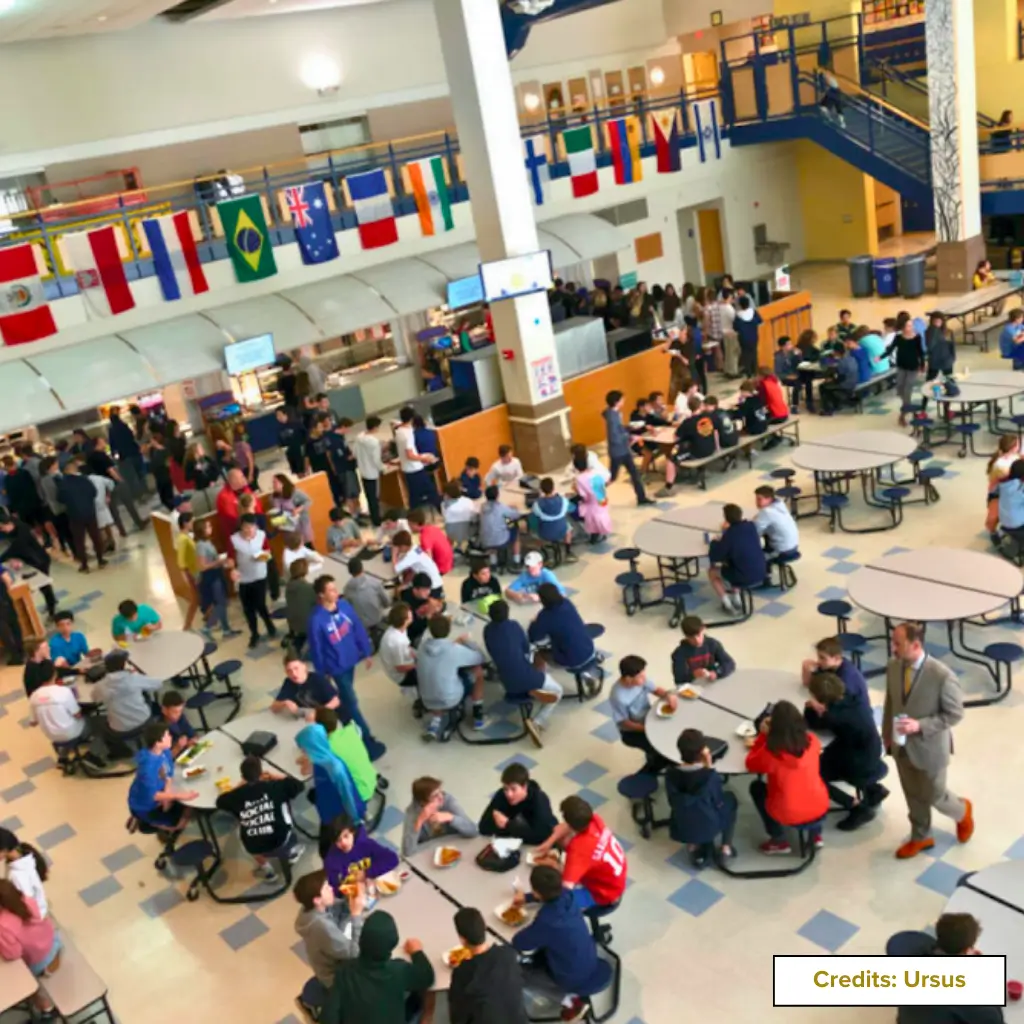
1. Round Tables for Better Interaction
Switching to round tables can make cafeterias more inviting. Round tables let everyone see and talk to each other easily, ensuring no one feels left out. For example, a shy student at a round table might find it easier to join in on conversations, helping them feel more included.
Suggested Reading → The Different Types of Cafeteria Tables for Schools
2. Clarity Through Seating Charts
Seating charts can provide clarity and reduce social stress. For instance, a student worried about sitting near a bully can avoid them without causing a scene. Once students get used to assigned seating, they often appreciate the predictability, which helps them focus more on enjoying their meals rather than worrying about where to sit.
3. Flexible Seating Options
Combining assigned and unassigned seating areas can meet different needs. This approach allows students to choose where to sit on some days while providing structure on others. For example, students might have assigned seats during busy lunch periods but can choose their spots during quieter times.
4. Buddy System for New Friendships
A buddy system can help students make new friends and feel supported. Pairing students, especially newcomers, with peers can ease anxiety and create a more inclusive environment. Imagine a new student feeling more at ease with a buddy who helps them navigate the cafeteria and introduces them to others.
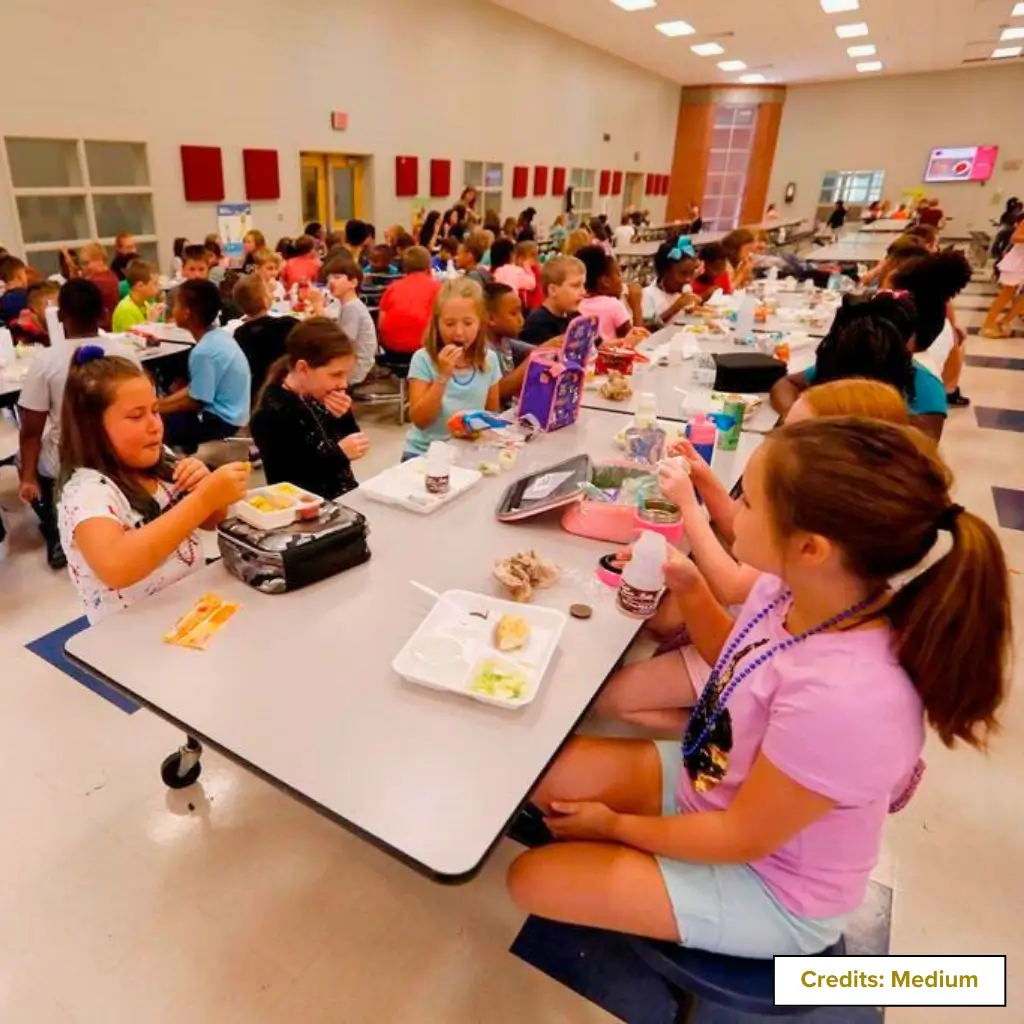
5. Themed Seating Areas
Creating themed seating areas can cater to different activities and preferences. For instance, quiet zones for reading can be a haven for students who prefer calm, and social zones for group discussions can encourage lively interactions.
6. Inclusion-Focused Spirit Weeks
Turning Spirit Weeks into times focused on inclusion and kindness can encourage students to meet new people and connect across grades. Activities that mix different grades can break down social barriers, fostering a more united school community.
7. Teacher Involvement in Seating Arrangements
Teachers can help make seating arrangements effective by observing and adjusting seating plans based on student interactions.
For example, a teacher might notice that certain students work better together and adjust the seating chart accordingly, ensuring a positive and productive cafeteria environment.
Suggested Reading → 5 Ways To Build A Positive School Culture
Final Thoughts
Ultimately, whether students should have assigned seats in the cafeteria prompts us to consider what lunchtime truly means for kids. Is it merely a break for food, or is it a crucial opportunity for fostering friendships and community?
A balanced approach that combines assigned seating with some open options while involving students in the decision-making process can provide valuable insights into what works best for them. Instead of enforcing strict rules, schools should focus on understanding students’ preferences, ensuring they still have the freedom to socialize.
After all, as the saying goes, “A happy heart is a magnet for miracles.” When students feel valued and heard, they are more likely to enjoy their time together and build lasting friendships.
FAQs
1. What are the benefits of assigned seats in the cafeteria?
Assigned seats can help reduce chaos during lunchtime, making it easier for teachers to supervise students. They can also encourage students to interact with different peers, fostering new friendships and improving social skills.
2. What are the drawbacks of having assigned seats in the cafeteria?
Assigned seating may limit students’ freedom to choose where they sit, which can be frustrating for those who want to sit with their friends. It might also lead to feelings of exclusion if students are placed with classmates they don’t get along with.
3. How could assigned seating improve cafeteria behavior?
Students might feel more responsible for their behavior with assigned seating, knowing that the same group regularly observes their actions. This can lead to a more respectful and orderly environment during lunchtime.


